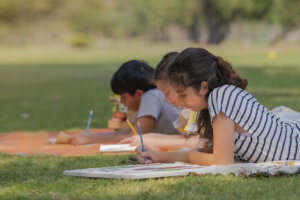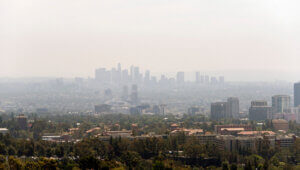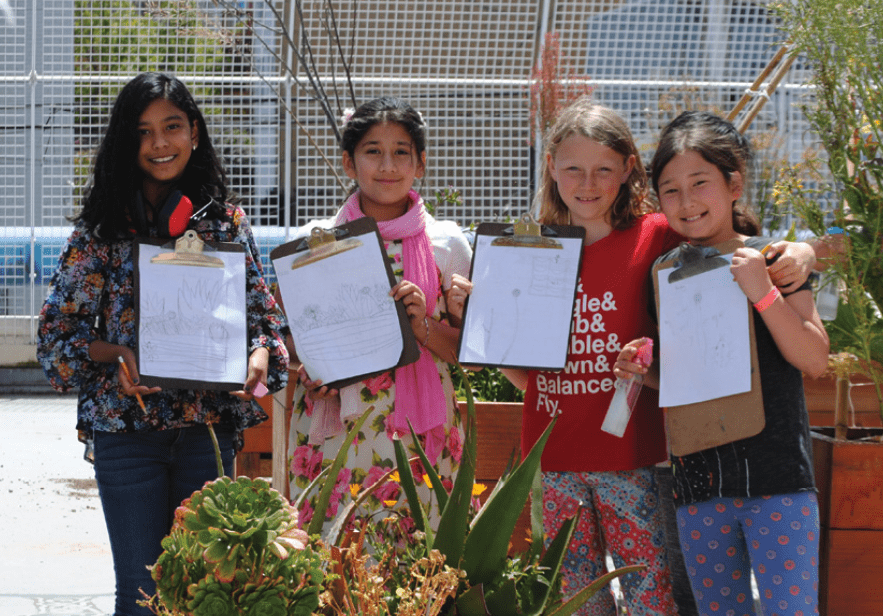In part three of our series highlighting the California Regional Environment Education Community (CREEC) Network Program, we interviewed Crystal Starr Howe, head of CREEC’s Southern Megaregion. Crystal Starr Howe is the Environmental Literacy Coordinator for the San Diego Office of Education, where she supports educators in integrating environmental education to inspire student-led climate action. Crystal works with educators to identify local environmental phenomena and evaluate their impact on students’ communities before developing solutions.
In this interview, Crystal talks about how she became an environmental literacy advocate and how she is supporting the implementation of environmental literacy education through a grant from the CREEC Network.
Read parts one and two of our CREEC Network Program series.
Want to stay up-to-date with what education leaders and environmental justice advocates are doing to implement environmental literacy in California? Subscribe to our monthly newsletter!
How did you begin your career in education?
After I graduated from college with a degree in chemistry, I began working as a substitute teacher because I knew I didn’t want to work in a lab. Two weeks after classes began, the school needed someone to teach chemistry, so I became a teacher with an emergency credential. I stayed in that position for the next 15 years, first teaching chemistry before moving on to biology, AP biology, and earth science.
What sparked your passion for working in environmental education?
I had a roundabout journey to becoming an advocate of environmental education. While I was a teacher on maternity leave, a friend told me that the San Diego County Office of Education needed a part-time CREEC coordinator. I thought it was a great idea, so I became the new CREEC coordinator and discovered that my work felt invigorating. Although the position focused on the environment, it still centered on the classroom, and I was helping people understand Common Core and the Next Generation Science Standards (NGSS).
When I returned to the classroom, I would host meetings during my prep period as part of my position with CREEC. Park rangers would show up to my classroom for the meetings with their hats on, and my students thought it was hilarious. Because of the connections I made through my part-time position as CREEC coordinator, I began taking my students on more field trips and utilizing nature as a teaching tool in ways I hadn’t ever done before. It was an amazing experience I wouldn’t have had if I hadn’t fostered the connections I made at CREEC.
Eventually, I was presented with the opportunity to work for the San Diego Office of Education full-time to lead the grant-writing process for their state environmental literacy phenomena summits. Since then, I have been working as an advocate for environmental literacy for young people.
What experiences do you find most rewarding in this work?
Seeing how students and teachers engage with education in ways they can’t when in a classroom environment excites me. I didn’t grow up wanting to save the world. That wasn’t who I was as a kid. But I did grow up poor, so I spent all my time outdoors. We went hiking because it was free. We went camping because it was free. Seeing teachers and students find such value in the outdoors grounds me in my work.
How do you see students benefit from forging connections with the community-based partners who connect classrooms with the outside world?
As someone who has two elementary school students of my own, I know their teachers try to connect the things they are learning to the real world. And when I was a high school teacher, the students demanded explanations for the relevance of the material we were covering. One of the things I learned when we began to transition to the Next Generation Science Standards (NGSS) was that connecting classroom material to real-world phenomena was a challenge facing many teachers at all grade levels. Biology wasn’t a challenge because of the nature of the subject, but chemistry and physics have traditionally been taught as incredibly abstract things.
Forging connections with community-based partners helps us connect those subjects with real-world phenomena. For example, if we want to talk with students about thermal expansion in water, I could go to a community-based partner whose work is attached to an estuary, and they can talk with students about rising sea levels.
Or consider a field trip to a zoo. Until we connect teachers with community-based partners, that can feel like just an excuse to look at cool animals. But forging a relationship with the researchers at a zoo can create an opportunity for teachers to connect their classroom with the real-world research in that space.
What does that do to change the way students engage with education?
When you build relationships with community-based partners, teachers can show their students that the things they teach connect to real jobs. Even when we connect the material to things they could do on their weekend or vacation, it becomes more relevant to their lives and the real world. Using community-based partners to draw these connections greatly affects how they interact with teachers and treat their work.
How does environmental literacy build more inclusive spaces where students feel like they belong?
Environmental education allows students to do the things they already know based on their experiences. Typically, when we teach a subject like climate change, teachers will lecture about the things we know about it from scientific research. But regardless of whether students have been equipped with the environmental literacy to interpret it, young people know about climate change first-hand and are the most impacted by it. Young people in California may know someone who lost their house to a wildfire or doesn’t have water access. Environmental education opens spaces in the classroom where everyone plays a part in what we learn.
How does your region’s grant from the CREEC Network support this work? How are you using the funds to help implement environmental literacy?
As part of the Southern California CREEC Network, we are beginning to offer teachers professional learning opportunities. We have partnered with the UCI Science Project to create a virtual four-day science workshop for high school teachers called “Launching Environmental Literacy with Culturally Relevant Phenomena.”
Through this program, we support teachers in finding a local environmental phenomenon and making observations based on available scientific data to determine if it intersects with environmental justice. Then we facilitate an empathy interview process where we help them determine who is impacted by this issue and what justice for that community looks like. Next, we help them design a project or learning experience based on what solutions they believe make the most sense. After they put their project into action, they report to us about how it went, what their students did, and what they learned.
What are you hoping this workshop will achieve?
Part of what we want to achieve with this workshop is to help educators understand the connection between NGSS and environmental justice. Once these connections are made for educators, we want them to see how this leads to student-led action. Equipping educators with this knowledge and tools can help students make evidence-based claims about local environmental justice issues while co-constructing their understandings of science and advocating for a more resilient future.







